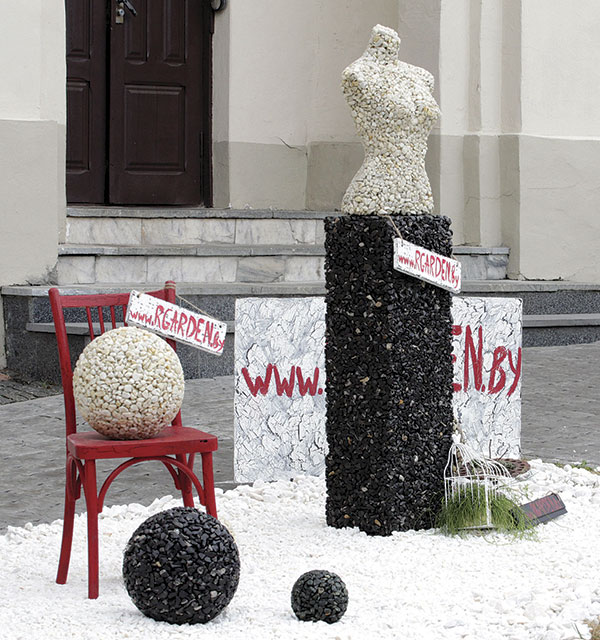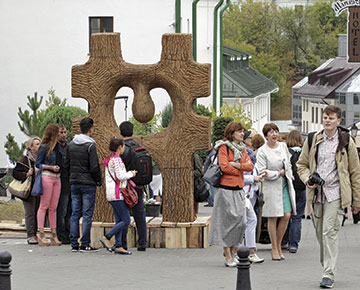Minsk hosts 11th National Festival of Architecture Minsk-2015, using near-permanent stage beside restored Church of the Holy Spirit
For the first time, the forum was held ‘on the street’, having been previously hosted by the Palace of Arts. The new venue is fitting, being located in the city’s beautiful historical centre, surrounded by masterpieces of architecture. The stage is also known for hosting various cultural, musical and theatrical events.

Meandering through the ‘upper town’ (known once as the ‘high place’, I couldn’t help but notice that the designs on show hark back to former architectural styles, combining these with modern technologies. Tatiana Keskevich, with her husband and co-author Yevgeny Lyashuk, designed a home in the village of Khodosy, in the Zhabinka District, for which they won the Small Grand Prix at Minsk’s Leonardo-2015, International Biannual Exhibition of Young Architects. They shared the award with Spaniard Antonio Linan, for his apartment house design in the Spanish city of Ceuta.
This has been the first time that Belarusians have claimed the main prize at the international Leonardo, surpassing nearly 150 entrants, from 20 countries, judged by an international jury of seven experts.
Yekaterina Korbut, the director of Leonardo-2015, tells us, “Works recognised as best are those which have high artistic, engineering and economic characteristics.”

Tatiana and Yevgeny introduce their Khodosy house design
Keskevich and Lyashuk realised their dream in creating a home in a village environment, which included all modern conveniences: a dream shared by most of us. It is one of eight houses they have designed and which are already being built in Khodosy. They always ensure that living spaces face south, to receive the sun’s warmth (which saves on heating). Other rooms are permitted to face north, including the garage. Their facades are trimmed with a distinctive herring-bone pattern, which is characteristic of Belarusian rural architecture. Yevgeny noticed this style while travelling. Tatiana designs open plan kitchen-living areas, featuring traditional stoves for cooking and heating. You can imagine sleeping on the stove, as in a fairy tale.
The pair insist that the project and materials aren’t expensive, with most funds required to pay builders. 150 square metres is enough for a large family. Of course, having such a comfortable home inspires the birth of children and their upbringing surrounded by nature.
The festival was held until September 14th, on Oktyabrskaya Square and in the Upper Town, showing projects by modern architects from Belarus and from abroad. Comparing the works of our designers with those from Slovakia, Lithuania and Russia, I’m happy to see that the Belarusian school operates at a worthy European level.

Reviving an older building can be a more difficult task, as those who reconstructed the former sausage workshop into the Neres shopping and entertainment centre, in Vileika, know well. Its architects have combined classical elements from the former building, ensuring that the new design is harmonious with its historical environment. The Neres centre doesn’t mask its surrounding low-rise buildings, or the local church, which gracefully peeps from the roof of the entertainment centre. All is well-balanced.
Examining the stands, there’s much to admire and many wonderful ideas to inspire us. If the best of the designs come to fruition, they will beautify our country indeed.
МТ’S REFERENCE:
Walking along Kirill i Mefodiy Street, and along Herzen Street, you are sure to notice the unusual and courageous statues, produced by ArTRESHtki project, organised by the Belarusian Union of Designers. It inspires contradictory feelings already by its title, comprising ‘art’, and ‘trash’ and ‘reshtki’ (translated as the ‘remains’ from the Belarusian). There are magnificent mosaics and, even, a large red metal bull! If it doesn’t scare anyone too much, it may remain on Herzen Street after the festival.
By Valery Kravtsov











